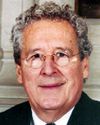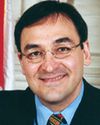(a) The government is not offering financial compensation to victims of alleged faulty breast implants.
(b) Results from this study will be released as soon as possible following the analysis of the data.
(c) The study in question was very large and complicated, involving many different organizations. It took approximately four years to reach the stage where the provinces, Ontario and Quebec, had collected the data and assembled the cohort required. This data was submitted to Statistics Canada for approval of the cohort/mortality/cancer incidence linkage process. In August 2002, Statistics Canada released the linked data to Ontario and Quebec so that the cancer staging information could be added to the linked records.
The analysis team, involving representatives from Ontario, Quebec and Health Canada, met on February 17, 2003. An analysis plan was drawn up and agreed to by all parties. A report will be prepared for public release following the completion of the data analysis.
(d) Health Canada is assessing the feasibility of a national breast implant registry.
(e) Health care costs are tracked by the provincial ministries.
(f) No.
(g) Breast implants are medical devices and must meet the requirements of the Food and Drugs Act and the medical devices regulations before being offered for sale. Under this act and the regulations, the responsibility of selling safe and effective medical devices resides with the manufacturer. Breast implants have been placed in the highest risk class of medical devices. These devices undergo the highest degree of premarket review prior to sale.
No medical device sold in Canada is without risk. The degree of remaining risk for any medical device must be balanced with potential benefit for the patient. The discussion of risk and benefit for any medical treatment is held between patients and their health care provider. The decision is made by the patient in consultation with her physician. Physicians are urged by their professional associations to obtain a signed informed consent before treatment.
(h) The sale of a medical device under part 2 of the regulations, i.e. special access, requires health care professionals to sign a declaration that they have provided the patient with details of the risks and potential benefits of the device. Physicians must also inform patients that the device is being obtained under the special access program.
For each patient receiving a saline or silicone gel-filled breast implant or tissue expander through the special access program, Health Canada has a signed attestation from surgeons involved, as required by section 71(1) of the Medical Devices Regulations, that they have informed the patient of the risks and benefits associated with the device to be used.
Health Canada has requested, obtained and reviewed basic safety data from manufacturers whose breast implants are requested by health care professionals through the special access program.
(i) The department has investigated the potential risks brought to its attention, requesting and evaluating additional information regarding breast implants from their manufacturers. Independent studies and research were conducted into these potential risks and several internal and external advisory committees were struck to investigate the concerns.
A voluntary moratorium on the sale of silicone gel-filled breast implants was put in place in 1992. In 1993 the then Minister of Health announced that these devices could not be sold in Canada until manufacturers were able to address the outstanding safety and effectiveness concerns.
Health Canada has increased the amount of information provided by the manufacturers, through their product monographs, to women considering breast surgery. Additional information has also been provided to Canadian women via the “It’s Your Health” publications discussing breast implants and medical devices in general.












